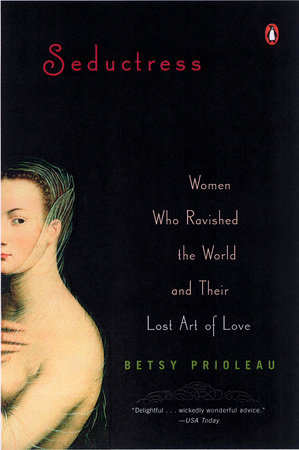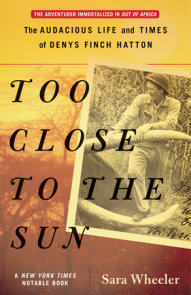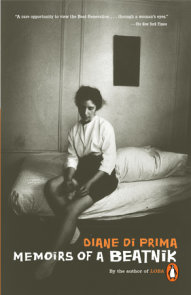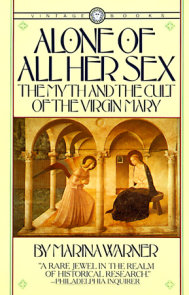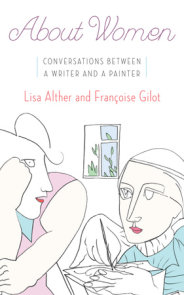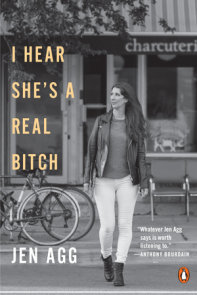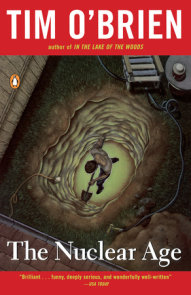READERS GUIDE
Questions and Topics for Discussion
INTRODUCTION
Seductress is a new take on history’s great enchantresses. Demonized and trivialized for centuries, the seductress has been stigmatized as either a shark-hearted vamp or brainless blonde bombshell. She is one of the most discredited female figures in Western culture.
This first-ever treatment of the subject tells a different story. Real seductresses—women who conquer and keep the best men—explode all the stereotypes. Contrary to popular fable, these charmeuses were exemplary women of high achievement. Strong, smart, and self-realized, they combined erotic conquest with personal and vocational success, and practiced a sophisticated amorous art that’s relatively unknown.
Each chapter targets a different myth and tells the colorful stories of six kinds of seductress: nonbeauties, seniors, intellectuals, artists (not muses), and two commanda types—governmental leaders and high-octane adventuresses. Some of these fascinators are familiar like Cleopatra, Lola Montez, and Wallis Simpson; others less so, like the celebrated Edwardian pianist Violet Gordon Woodhouse who lived in a life-long ménage a cinq with four devoted “superhusbands.” In every case they defy conventional beliefs.
Rarely beautiful or young, they were daring renegades—independent, autonomous, ambitious, “unfeminine,” and confident. And they employed a long-forgotten erotic art that upends all the pop how-tos. Instead of using coy, servile maneuvers, they enthralled men with their characters and a lovecraft based on ancient, timeless techniques. These are ninety percent psychological—mindspells woven of wit, drama, joie de vivre, difficulty, deep ego massage, and people savvy. The women who captivated men for life and beyond used their heads and imaginations, not their cleavage.
Amid the current “plague years” in female sexual power, seductresses provide welcome relief. Through their inspiration and love wisdom they can help women reclaim the field—junk the pretty power propaganda, dial up their personality and inner charm, and capture the men of their choice. They show women how to get their swerve back and recoup their birthright of sexual sovereignty.
Men, too, will prosper. The seductress is a man’s ideal dream woman; she’s the best thing that can happen to him, conferring growth, creativity, and authentic masculinity. Seductress is win-win for both sexes, a celebration, a manifesto, and a thinking woman’s how-to—a master plan for full female entitlement in the twenty-first century: women in charge erotically and professionally, holistic happiness, and the best men under their spell.
ABOUT ELIZABETH PRIOLEAUBetsy Prioleau has been a scholar in residence at New York University and a professor at Manhattan College. She is the author of Circle of Eros: Sexuality in the Works of William Dean Howells.
DISCUSSION QUESTIONSWhy do you think ancient patriarchal cultures like Sumer and Athenian Greece tolerated such unruly sex goddesses?
Of the six classes of seductress—from plain sirens to adventuresses—which group had the greatest obstacles to overcome? What were their weapons of choice and why did they work?
Pick two seductresses at random—Lola Montez and Minette Helvetius, for example—and analyze how they did it, using the Art of Love precepts in chapter one. What did they leave out? Contrast the two approaches.
Many of the seductresses in the book were androgynous—unfeminine types with male interests and qualities. Discuss this paradox. What makes “masculine” women seductive and why?
The philosopher Søren Kierkegaard thought seduction necessary for all worldly enterprises. “A man who cannot seduce men,” he said, “cannot save them either.” How useful is this for women in the workplace? Can women deploy some of these erotic strategies nonsexually as Elizabeth I and Catherine the Great did to lead more effectively? Where does this shade into sexual harassment?
From the beginning, mainstream Feminism has been antagonistic to sexually successful women. Examine this phenomenon. Explore the puritan roots in the movement and the issue of sexual rivalry.
Some civilizations are more receptive to the seductress than others. For example, a disproportionate number of seductresses in the book are French, a culture steeped in sexism. How is America either good or bad for seductresses? Why?
Conversation is one of the most consistent and powerful aphrodisiacs used by the great seductresses. What were the components of their conversational magic? Can we retrieve them today? How?
Based on the stories of history’s top enchantresses, construct a twenty-first-century master plan to recoup female romantic primacy in an age of online dating, hook-up/break-up relationships, beautymania, and the banalization of sex and love.
Who are the seductresses today? What are their chief allures and strengths as contrasted with those of the past? What are the barriers now preventing women from being seductresses?
If seductresses are such exemplary women, why were they demonized through the ages? If men loved them so much, why did they persecute them, and why did women join them?
Compare and contrast two opposite seductresses, such as Lou Andreas Salomé, who wore no makeup and discussed philosophy, and Cora Pearl, who overdressed and traded in jokes and small talk. What qualities do they share in common?
Seductresses are known by their ability to get and keep the best men. Define this “best” man. What do women really want in a mate? Once we have sexual choice, do we choose well or poorly like Wallis Simpson?
Many of the seductresses suffered persecution and/or social exclusion. What are the qualities necessary to survive as a seductress in the face of prejudice, envy, and the spite of lesser men.
Discuss the role of media, popular culture, compulsory education, and religious or moral indoctrination today with respect to female sexual autonomy and power.
For all of recorded history men have been perceived as the stronger, sexier sex. Examine the truth of this belief in the light of the stories of the seductresses.
Can you track any changes in seductresses over the centuries? If so, can you spot any constants in the personalities and strategies of these mancharmers? Are women as seductive now as in the past?







